Turkey’s Underground Cities
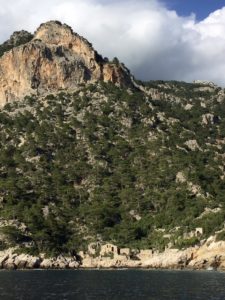
if you can make it out, there are ruins of ancient buildings along the coast that were completely protected except from the sea because of the steep rocky hillside behind them
What do you do if battles are raging where you live, foreigners are invading, or the rulers of your land want to annihilate your people because you practice a different religion? You might need shelter to survive. But what if there are no fortifications or natural geographical protections above ground? If the geology of your region is like the Nevsehir Province of Turkey, with its soft, volcanic rock, you might seek shelter underground by carving into the rock.
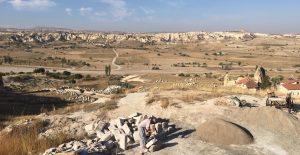
In fact, there are hundreds of underground cities in this region carved out of the rock. We explored Derinkuyu, which is the largest excavated city open to visitors.
Another huge underground city was discovered last year.
We learned that the underground cities began as caves in the 8th century B.C. Later, in the Common Era, Christians began using caves and then more elaborate underground cities, to seek refuge from Muslim Arabs during the Arab -Byzantine wars in the 8th-12th century A.D. and then from the Mongolian invasions in the 14th century. Only after 1923 when the Christians were expelled in the population exchange with Greece did the tunnels cease being used.
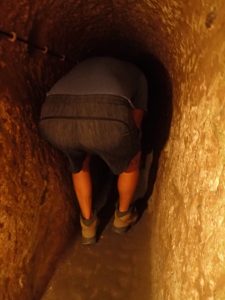
this is how tiny the passageway in and and out of the distant room that was their morgue
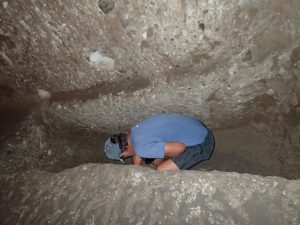
Rand down in an area where dead bodies were stored
Derinkuyu extends over 200 feet and 11 levels deep below the surface of the earth through a rabbit warren of thin, steep rock-hewn passages, and a few open areas. Not only did as many as 20,000 people live in these tunnels; their livestock had to come too. In these spaces we saw wine rooms, oil pressing rooms, a stables, food storage rooms, school rooms, places for worship and even a special place to store the bodies of anyone who died underground.
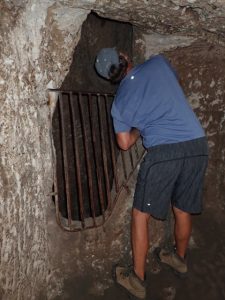
Rand peers up the ventilation shaft
There was ventilation shaft that ran vertically from the bottom of the city to the surface of the earth, and a deep well providing water. To keep enemies out, there were large stones that could be pulled across the passageways.
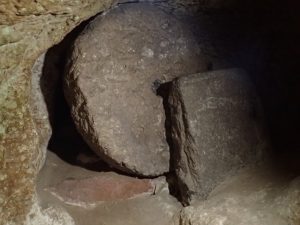
round stones to seal off passageways
Compared to the heat above ground, the cave felt cool and comfortable. We were told it stays at 55 degrees fahrenheit year-round. Low-wattage electric lights had been wired for us, but what would it have been like to live underground depending only on fire for light? It was hard to imagine.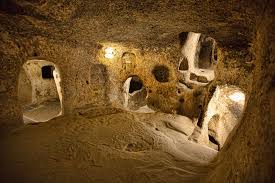
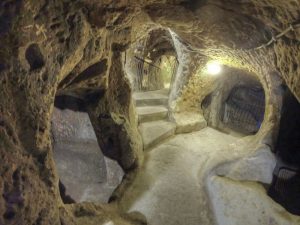
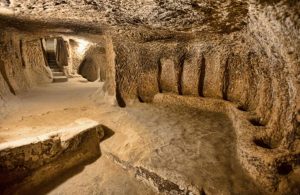
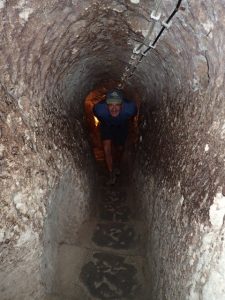
Rand bending over and coming up a passage from behind me, showing how steep and tight they are
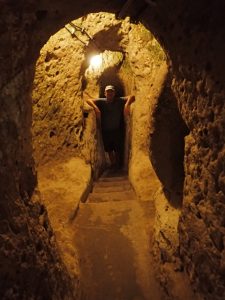
Rand standing at a relatively open area on the vertical passageways

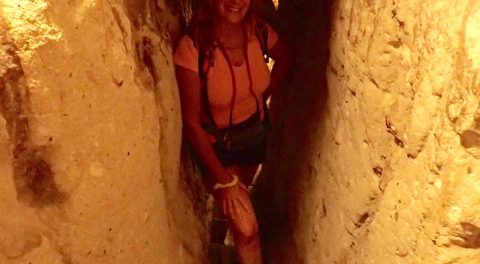





Leave a comment